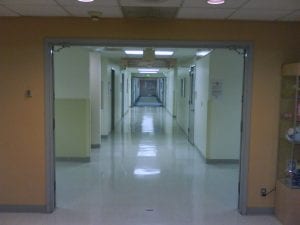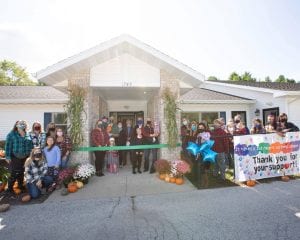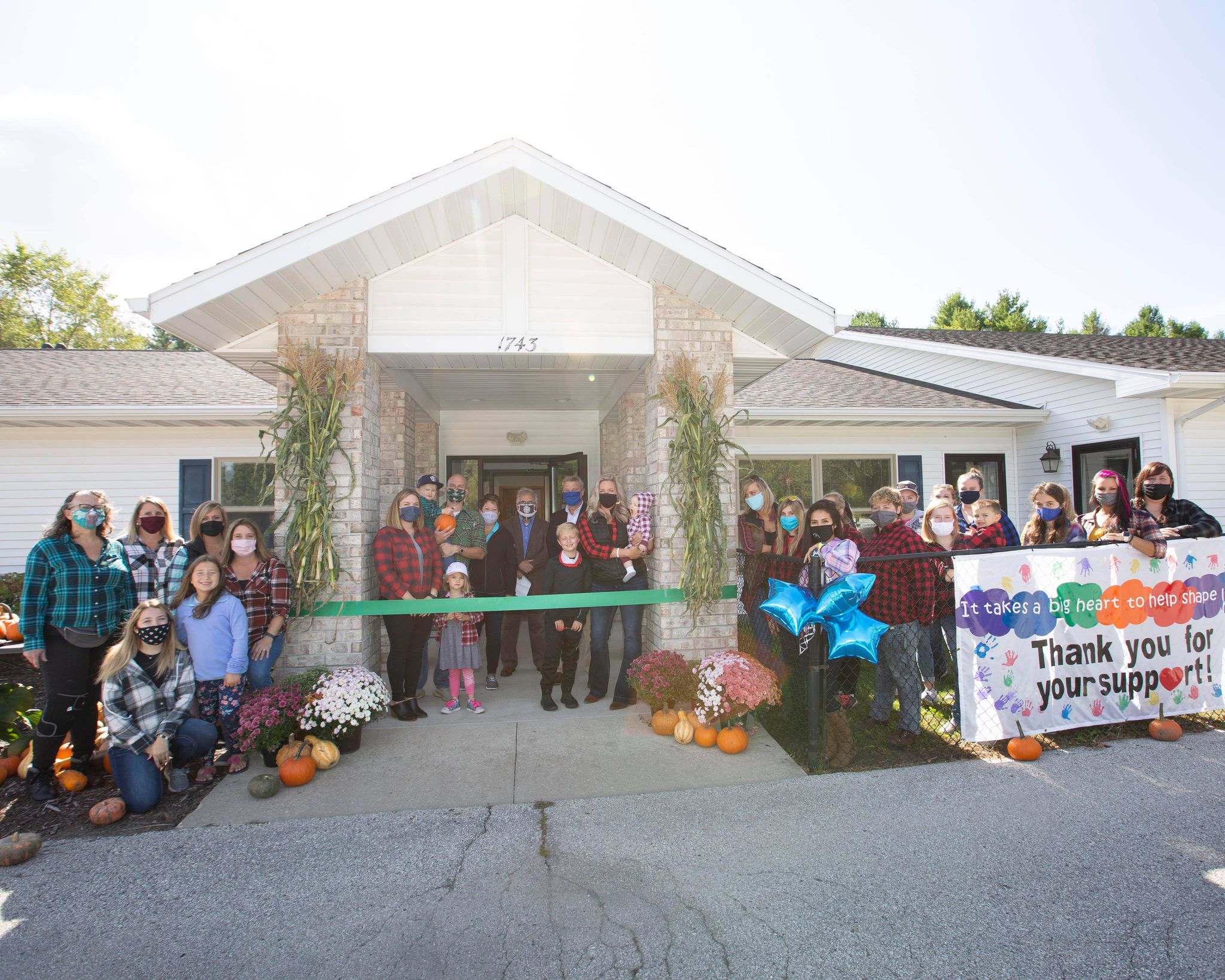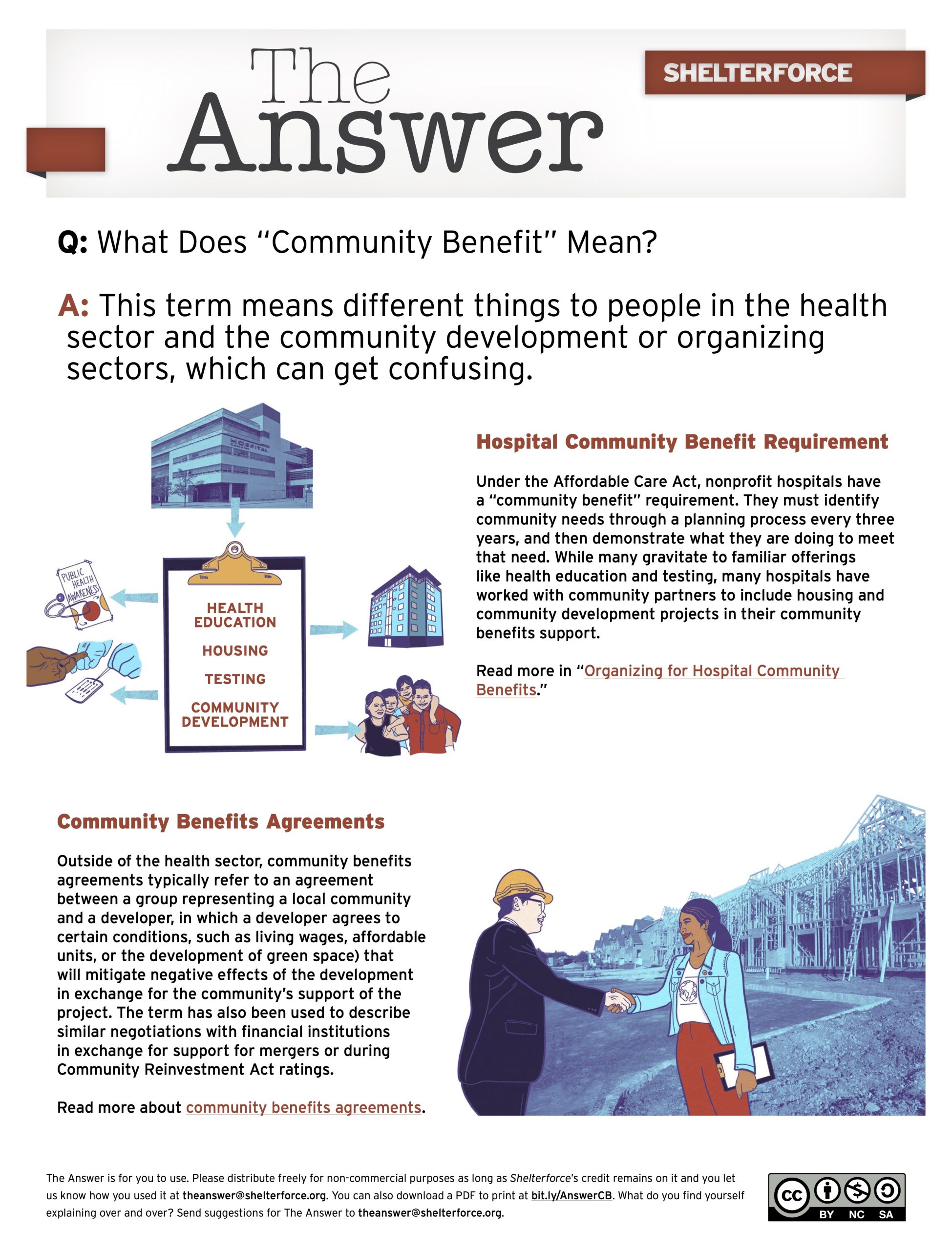
Photo by Flickr user Brave Heart, CC BY-NC-ND 2.0
This piece was co-published with the Build Healthy Places Network.
One of the biggest new trends in the community development sector over the past half-decade is the entry of health care systems into the field. It’s definitely not mainstream yet, but around the country, hospital systems are making significant investments in community needs.
ProMedica, an Ohio-based institution that’s leading the field, has invested in affordable housing, workforce development, and a grocery store in a former food desert. In Utah, Intermountain Healthcare is helping to preserve naturally occurring affordable housing. And Sentara Healthcare, in southeast Virginia, has pledged $50 million to national nonprofit lender LISC for affordable housing in that region.
These commitments aren’t donations: they’re actual investments that will earn a return, albeit a modest one. Many of the health care systems now engaged in community investment work formerly issued grants to local social service organizations, but found over time that they could have a much greater impact by investing the resources already available to them: their balance sheets, investable assets, or land. And because factors that exist outside of a hospital’s doors—like housing, jobs, and transportation—have the greatest impact on a person’s health, these hospitals are finding that they’re better able to promote their patients’ well-being.
But while the concept is quickly spreading among large and mid-sized hospital systems, institutions based in rural regions are almost completely missing from the list.
That’s not too surprising. For over a decade, many of the nation’s rural hospitals have been struggling to keep their doors open due to factors such as increased health care costs and a population that’s disproportionately unhealthy, elderly, and lacking health insurance. Just prior to the coronavirus pandemic, at least a quarter of the nation’s rural hospitals were experiencing real financial distress. And last year, 20 rural hospitals around the U.S.—the highest number in over a decade—closed their doors.
Some large health care systems do invest in the communities surrounding their rural branches. However, the leaders of wholly rural-based hospitals tend to view their institutions as unable to afford investments in the social determinants of health, even if those initiatives are particularly needed by their client population and could eventually lower health care costs.
But that’s not necessarily true, says Robin Hacke, executive director of the Center for Community Investment, which works directly with hospital systems already doing this work. “They wouldn’t need to make a $3 million investment,” she clarifies. “The scale of what they could do is in keeping with the scale of their resources. A little could go a long way.”
David Zuckerman leads the Healthcare Anchor Network, a group that encourages hospitals to invest a portion of their assets in their communities. He agrees with Hacke. “We’re not asking you to leverage all of your resources, just a portion,” he explains. “It’s all relative. One percent from a health system is more money than an affordable housing provider may have ever seen.”
Both Hacke and Zuckerman point out that rural hospitals have the particular advantage of intimately knowing their communities’ needs, key actors, and potential opportunities for change.
However, many rural-based hospitals around the country are, in fact, committing to and sometimes even investing in their communities—but they may be viewing that work through a different lens, or calling it by a different name. Below are a few creative, often groundbreaking, initiatives run by rural hospitals to tackle key social determinants in their communities. Some might just need a nudge to think differently, and bigger, about their potential impact. Others might simply need time to deepen their relationships.
Gathering and Tasking Like-minded Organizations in Vermont
In 2012, Northeastern Vermont Regional Hospital (NVRH) conducted its community health needs assessment, the evaluation and plan that tax-exempt hospitals must create every three years. The result was simultaneously unsurprising and disturbing to the hospital’s leaders.
“It showed, once again, that poverty is our biggest health disparity,” says Laural Ruggles, the director of community health improvement at NVRH. That wasn’t news: the hospital is in Vermont’s Northeast Kingdom region, a particularly rural area that consistently ranks lowest in health outcomes among Vermont’s regions. But it wasn’t acceptable to the hospital’s leaders, including its CEO at the time, Paul Bengtson.
In response, Bengtson gathered the leaders of groups from around the region: housing organizations, mental health providers, community health centers, the Northeast Kingdom Council on Aging, alcohol and drug rehabilitation programs, youth services, and others. After examining existing models, the organizations together created NEK Prosper, a collaborative group comprising five subgroups, each focusing on a particular social determinant: housing, food, behavioral health, physical fitness, and economic development.
“We’d had very good working relationships with the people doing direct service at the ground level,” says Ruggles. “But NEK Prosper brought the groups to become more aligned.” Each of the subgroups, called “collaborative action networks,” or CANs, meets independently to create a strategy, implement it, and evaluate the outcome. The CANs largely raise their own funding, which usually comes in the form of grants or awards.
But NEK Prosper has more recently added two investment funds to its activities—both of which are good examples of community investments, despite not being labeled as such by the group. Developed in partnership with a local CDFI, the NEK Prosperity Fund provides capital to small and emerging local businesses, particularly those that might not qualify for traditional loans. And the Healthy Cents Fund—created with the monthly funding for Medicaid recipients regularly paid to NVRH—is allocated to local organizations that are proposing innovative upstream investments to address one of NEK Prosper’s five key areas.
None of this would be possible without NVRH’s involvement. Aside from the Medicaid monies that go into the Healthy Cents Fund, the hospital provides about $10,000 per year for each CAN from its community benefits budget. Just as important, however, are the intangible benefits it confers. “Despite its small size, NVRH is a leading force in the community,” Ruggles wrote last year in a scholarly article about NEK Prosper. And that means the hospital has been able to leverage its significant reputation and credibility in gathering partners, designing interventions, and raising money.
In Wisconsin, a Cooperative for Sharing Skills and Experiences
Forty years ago, the Rural Wisconsin Health Cooperative (RWHC) was launched as a vehicle for sharing services among five hospitals in southwest Wisconsin. Today, the cooperative includes 43 rural hospitals from all over the state that share and gain knowledge in topics like health plan contracting, health information technology, and workforce development. The group advocates for members as well, funding a lobbyist at the state level who works on behalf of rural health care providers.
About five years ago, RWHC staff first began examining the connection between the health of rural hospitals and the health of rural communities. “The idea is that rural hospitals can only be as economically healthy as their rural communities,” says Marie Barry, the new director of RWHC’s community economic development program, which formally launched in March this year. “We’re trying to get statewide economic development leaders thinking about health care, and get health care leaders thinking about economic development.”
Ultimately, the program’s goal is to create a set of policy recommendations that have been successfully tried out in individual communities and can be broken into discrete actions. For now, however, Barry and other RWHC staff are aiming to support the organization’s members as they prepare to move into what is often unknown territory.
With the help of academics from the University of Wisconsin in Madison, the group will be offering trainings on broad topics like ‘What is community economic development and why does it matter?’ as well as on specific subjects like how to create a tax increment finance district or apply to expand broadband internet access. They’ll also offer data analyses and will help the hospitals develop strategies to market their strengths and address their weaknesses.
It’s a new concept for some of the member hospitals’ CEOs: not all of them are certain that they should be spending their precious time and resources on issues not directly related to health care. But it should matter to them, Barry says.
She tells a story of a small, rural hospital in southwestern Wisconsin that had recruited a husband-wife provider team to work at the hospital. The couple had agreed to move there and asked the hospital staff to send recommendations for high-quality day cares in the area for their young children. “And there was literally not a single accredited child care facility anywhere nearby. So they decided not to come,” says Barry. That got the hospital leaders’ attention: the community’s economic struggles were affecting the institution’s bottom line.

Opening day at the Door County Child Development Center. Photo by Kelly Avenson, via Door County Child Development Center
In fact, another member hospital in rural Door County recently began partnering with the YMCA to subsidize a day care in its region. Barry and her colleagues are hoping the hospitals will share those types of experiences with each other in order to better address gaps in community services. Other health systems might target education, or affordable housing—any of which can make or break a hospital’s ability to hire and retain workers.
So far, however, the cooperative is largely discussing how the hospitals can pay for key community needs. Could its members instead find ways to invest their assets in those programs so that funding is available in perpetuity? The community development sector could be a ready-made partner to help figure out this step.
Bringing Housing to the Table in Virginia
In southwest Virginia, Ballad Health understood the importance of the social determinants. It had begun partnering with local organizations focused on children’s issues and had recently gotten a grant from Center for Medicaid Services to do a health screening of everyone who visited its emergency department, in order to better understand their needs.
But while housing came up in the screenings as the second most commonly mentioned need after food, the health system hadn’t yet reached out to any housing organizations. Perhaps that particular social determinant—one that’s typically more expensive than most of the others—felt too daunting. Or maybe the institution just hadn’t gotten around to it.
Whatever the reason, Andy Kegley, executive director of HOPE, an affordable housing organization in the region, decided to be proactive. He gathered seven other housing organizations—all of them members of Fahe, a coalition of nonprofits throughout Appalachia—to strategize, and then to connect with Ballad.
The hospital’s leaders were receptive to a meeting. Soon, the two groups were gathering regularly—first in person, and then on Zoom after the pandemic began—and building a sense of trust. “We established a great, intimate way to work together,” says Paula Masters, Ballad’s vice president of health programs.
But again, housing is expensive, and Kegley was eager to develop not only a relationship but also some hospital-funded programming that could help local residents. “Finally, we asked Ballad, ‘What can you all do to strengthen the housing networks to be more responsive?’” And in March, the hospital announced that it had awarded the housing groups a total of $100,000.
The tricky part is that none of the housing groups do the same thing—one focuses on single family homeownership, another does small scale multifamily developments, and another helps people with intellectual disabilities—and $12,500 each isn’t much. It’s enough, though, for each group to perform some basic services like mold remediation, accessibility renovations, weatherization, or utilities assistance. And that’s significant.
And it’s also a steppingstone to something bigger, Kegley says—with Ballad, but also with other hospitals in the area. He’d like to encourage two other health care systems nearby to also begin doing ER screenings to determine patients’ needs, and to get the subsequent housing referrals directed to his group.
In addition, HOPE has a program that provides emergency funds to residents experiencing a housing crisis; the organization will now begin asking recipients whether there’s a health connection to their housing need. It’s all a way to begin connecting housing and health in funders’ minds—and ultimately, to more effectively help local residents who are struggling.
A Kansas Hospital Launches a Flurry of Programs to Tackle the Social Determinants of Health
It was 2016 when Kendal Carswell got a phone call out of the blue from the CEO of Kearny County Hospital. Benjamin Anderson, who led the southwest Kansas hospital at the time, was interested in finding a way to reduce non-emergent use of the hospital’s ER and wanted to hire Carswell to develop new social service programs.
Carswell, a social worker and professor at a nearby university, said yes to the offer. Two years later, he had raised $1.5 million in grant funds, hired six new staff members, and created the Pioneer Care Advocacy Team, which ran a number of programs targeting local residents’ health and social needs.
Southwest Kansas is an unusual place. By and large, the region is racially and ethnically homogenous. But Tyson Foods runs a giant beef packing plant in Garden City, and the jobs there attract a wide range of immigrants from all over the world. Those residents, many of whom don’t speak English or fully understand the culture, frequently struggle with poverty. In response, many of the new programs focused on that population.
Thanks to funding from the Kansas Health Foundation, Blue Cross Blue Shield of Kansas, the federal Health Resources & Services Administration (HRSA), and Tyson Foods, the hospital was suddenly engaged in a range of new activities. One targeted healthy living, gathering a coalition of local organizations to promote active lifestyles and nonsmoking. Another created a care coordination team that visited and advocated for patients and potential patients, diverting them from the ER and referring them to other critical services. Still another helped immigrants acquire driver’s licenses and other basic needs to help them become more self-reliant.
The initiatives were successful: In 2017, the number of non-emergent visits to the emergency department dropped by 88 percent. And Kearny County jumped 50 spots in the annual rankings of Kansas counties’ health, from 83rd place to 33rd.
Carswell returned to academia in 2018, but many of the programs are still going strong. The initiative to advance healthy lifestyles is now in its second generation, thanks to continued funding from Blue Cross Blue Shield. A program to improve employee health at the Tyson plant has led to the establishing of a new clinic just outside the factory, paid for by Tyson Foods. The hospital is working with pregnant and postpartum women to enable healthy births, and it supports families through community services.
Carswell himself is still running one program, a civic engagement initiative focusing on the immigrant and refugee communities in Garden City. The program was initiated when Carswell and hospital staff saw that many immigrants in the area had U.S. citizenship, but didn’t realize they were able to vote and therefore had never cast a ballot. “The hospital is really supportive of this work,” says Carswell, explaining that the program helps some of the area’s newer arrivals better acclimate themselves and even empowers them to navigate the region’s political terrain.
In response, he designed a program to register new voters and help them understand the process; he created voter guides, took them to a gubernatorial debate, and held a dry-run event that allowed participants to practice voting. He also invited them to an event where they met their congressional representative and were able to ask him questions and discuss their personal struggles. And he and the hospital’s former CEO created a series of dinners that paired new arrivals with longtime Kansans in an effort to help them better understand one another.
Carswell hadn’t planned on staying on after 2018, but says the work simply felt too important—and energizing. “I’m always hoping that the model and approach can be replicated in other rural areas, because the needs are there and it is possible to do,” he says. “It’s hard work, long hours, and amazingly rewarding.”
This article was co-published with Build Healthy Places Network.






Comments